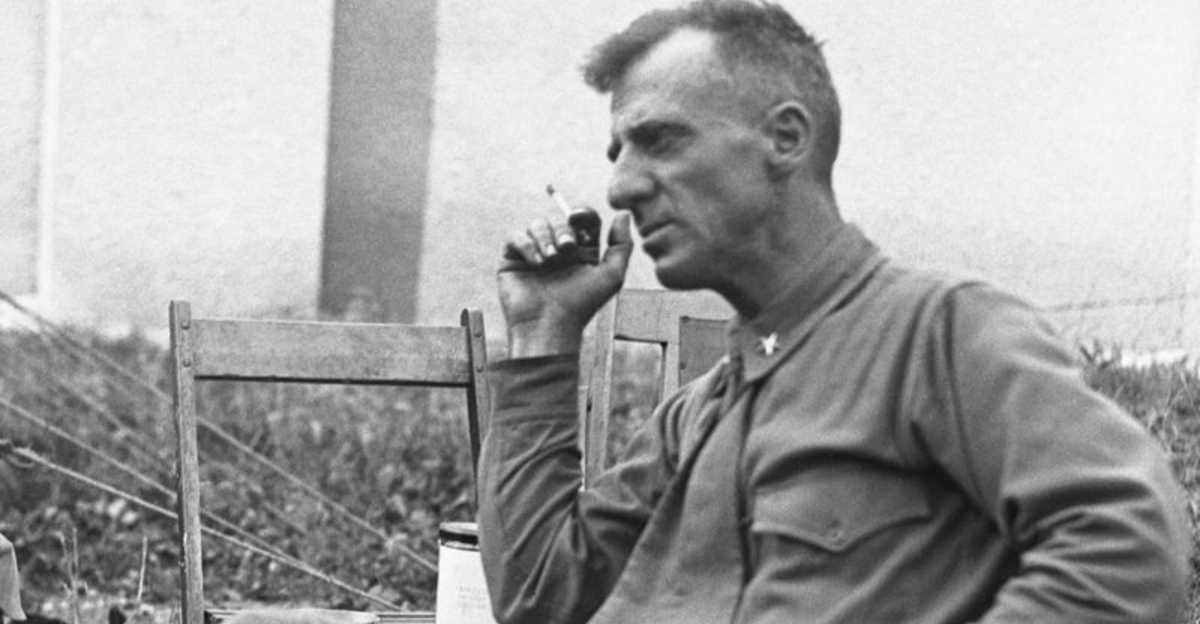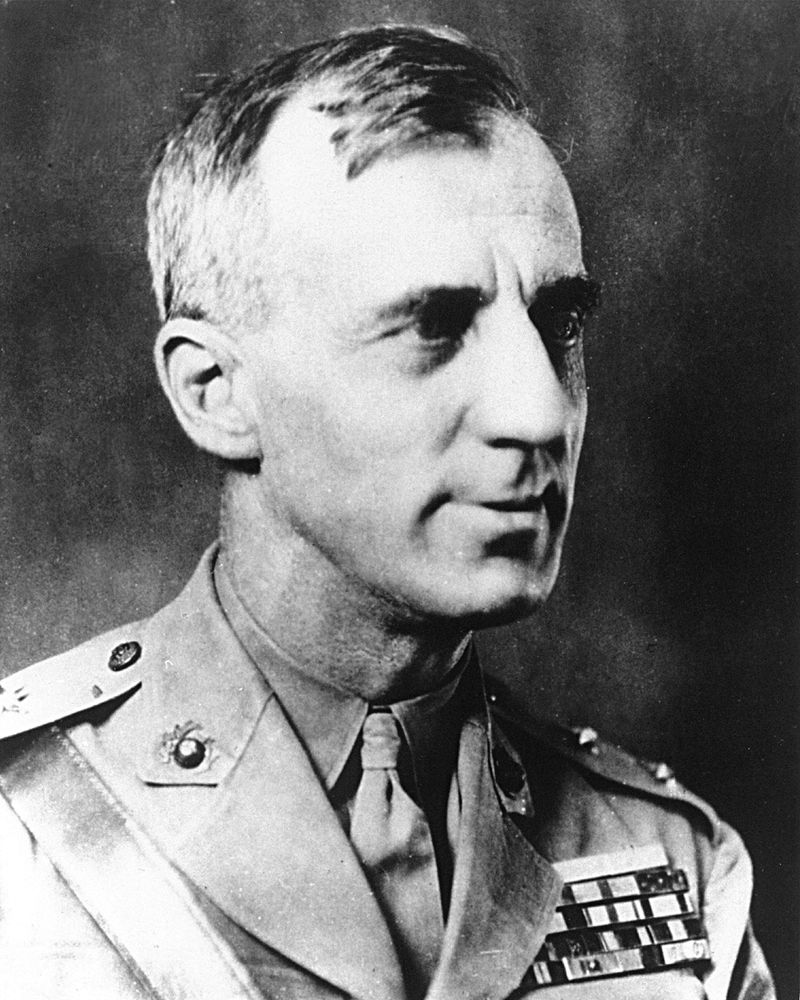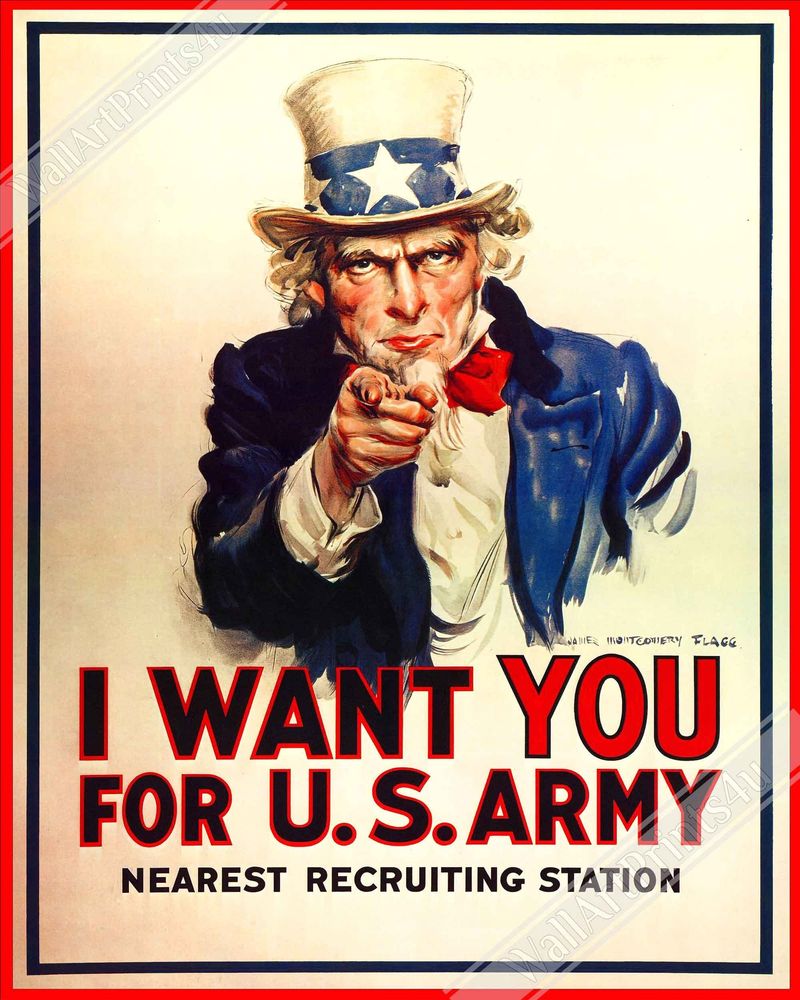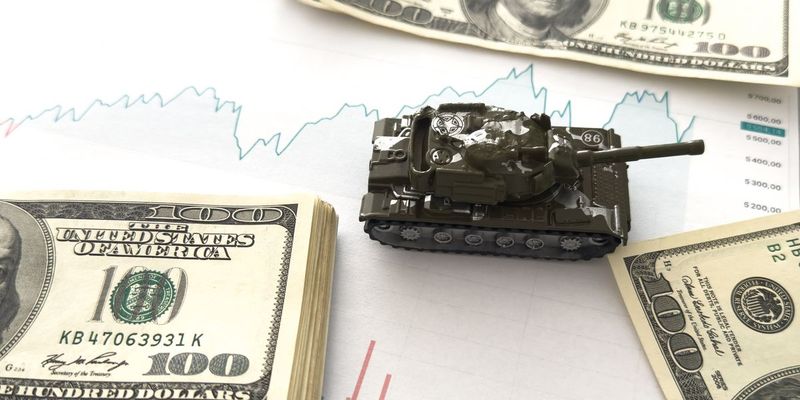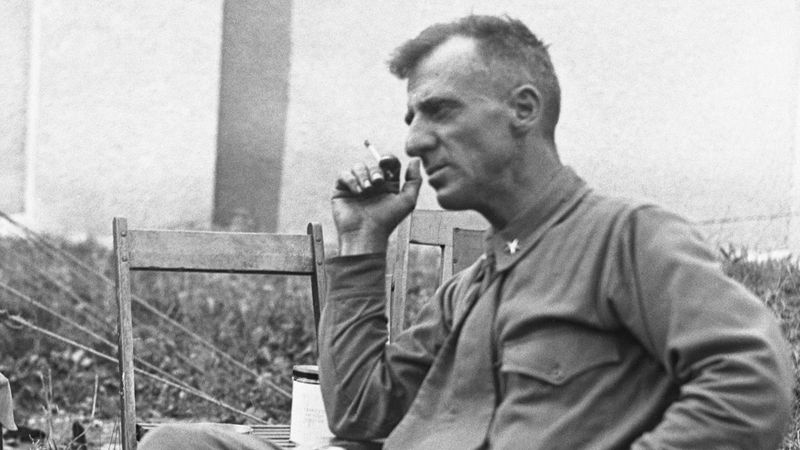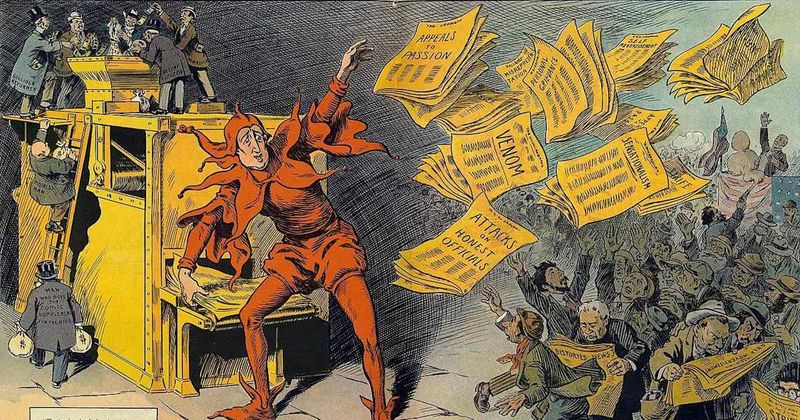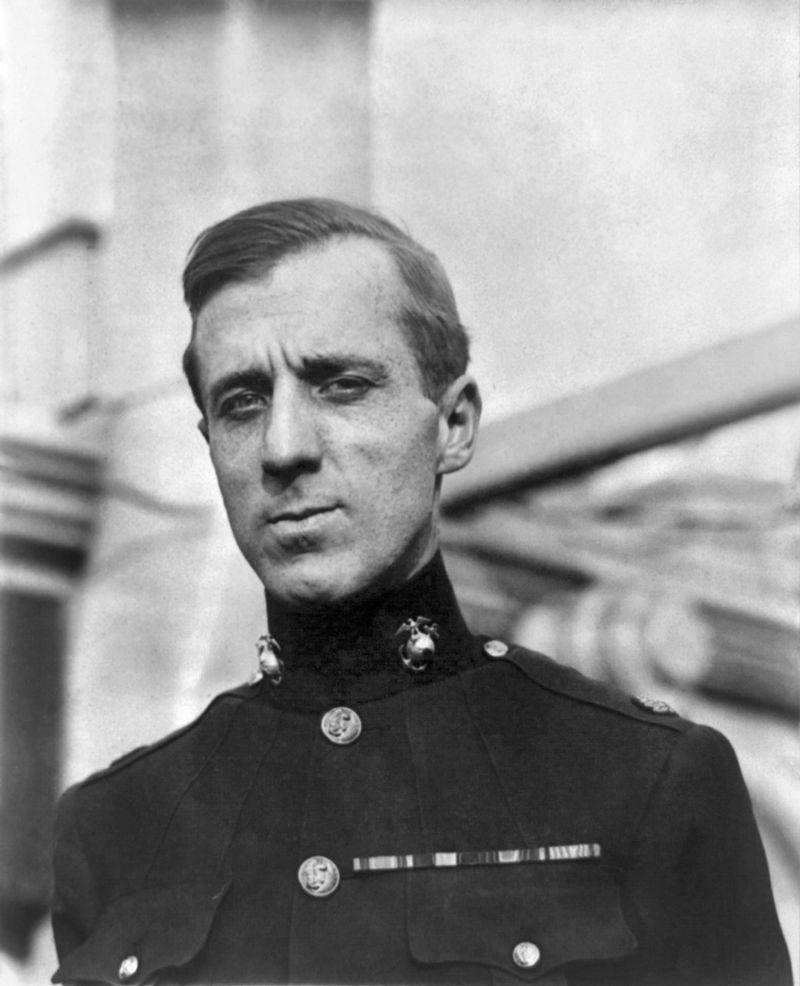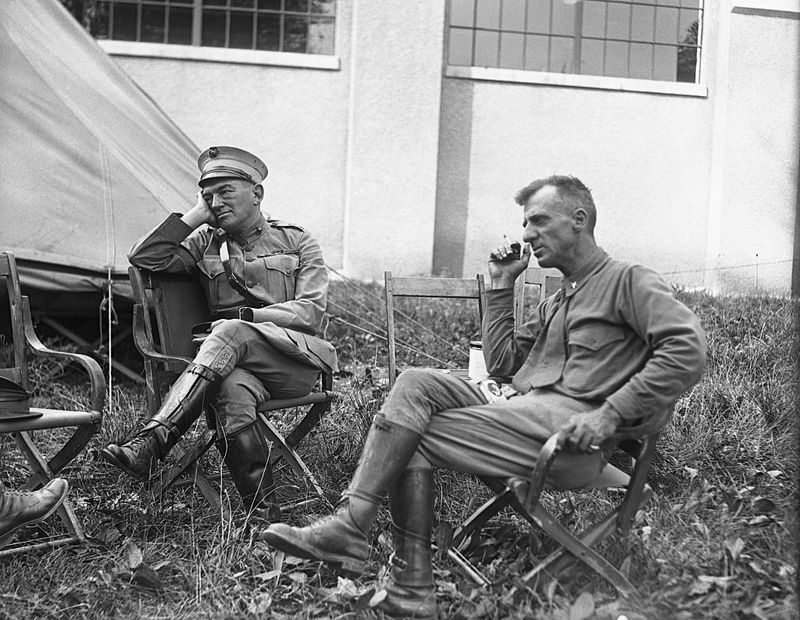General Smedley Butler was once America’s most decorated Marine before becoming one of its most outspoken war critics.
After serving in conflicts around the world, Butler wrote ‘War Is a Racket’ in 1935, exposing how military conflicts benefit the wealthy elite while ordinary citizens pay the price.
His book pulls back the curtain on who really profits from sending young people to die overseas.
1. War Isn’t About Freedom — It’s About Profit
Money drives warfare, not noble ideals. General Butler discovered this harsh reality after decades of military service, eventually realizing he had been nothing more than a “high-class muscle man” for big business and Wall Street.
The decorated Marine saw firsthand how patriotic speeches masked financial motives. While politicians spoke of democracy and freedom, bankers counted profits from loans, manufacturers celebrated weapon contracts, and resource companies eyed foreign territories.
Butler’s famous quote still echoes today: “War is a racket. It always has been. It is possibly the oldest, easily the most profitable, surely the most vicious.”
2. Soldiers Die, Corporations Thrive
The battlefield’s brutal math never changes: young lives traded for corporate profits. Butler documented how American business profits skyrocketed during World War I while 116,000 American soldiers died and another 200,000 were wounded.
Bethlehem Steel’s profits jumped from $6 million before the war to $49 million during the conflict. Similar profit explosions happened across industries supplying the war effort—from boots to bullets, ships to shells.
Most shocking to Butler: the same companies profiting from war supplies also received government subsidies to build their factories, essentially double-dipping from public funds.
3. The Real Enemy Isn’t on the Battlefield
Butler flipped the script on who threatens America most. After fighting across three continents, he concluded the gravest danger wasn’t foreign soldiers but domestic profiteers orchestrating conflicts from boardrooms.
These war architects never faced bullets themselves. They controlled newspapers to shape public opinion, funded politicians who would support military action, and created elaborate justifications for sending others to die.
“The flag follows the dollar and the soldiers follow the flag,” Butler observed. He recognized how financial interests determined which countries became enemies, which became allies, and which conflicts America entered.
4. Every War Is Carefully Marketed
Wars don’t just happen—they’re sold to the public like commercial products. Butler revealed how governments package conflicts with carefully crafted messages designed to trigger emotional responses rather than rational thought.
Fear becomes the primary marketing tool. Citizens are told their way of life is threatened, their safety is at risk, or their values are under attack. Patriotism transforms into a weapon that silences questioning voices.
Butler witnessed how quickly public opinion could be manipulated. The same German people Americans were encouraged to hate during World War I suddenly became friends when new enemies appeared. The marketing simply shifted to a new target.
5. Big Business Gets Rich — Taxpayers Foot the Bill
The financial shell game of warfare horrified Butler. He tracked how billions in public money flowed to private companies during conflicts, creating what he called “thousands of new millionaires and billionaires.”
DuPont saw profits rise 950% during World War I. Aircraft manufacturers, shipbuilders, uniform makers, and food suppliers all joined the gold rush. Meanwhile, ordinary citizens faced higher taxes, inflation, and rationing.
Butler found the ultimate injustice in how these companies secured contracts: through political connections, not competitive bidding. Some even charged the government for factory construction, then kept the facilities after the war ended.
6. The Public Pays Twice
Butler exposed warfare’s cruel double taxation. First, citizens fund conflicts through direct taxes and war bonds. Then they pay again through the lives lost, bodies broken, and minds shattered in combat.
The financial burden stretches for generations. World War I’s $52 billion cost (over $1 trillion today) created national debt that taxpayers shouldered for decades. Veterans returned to inadequate healthcare, limited job opportunities, and broken promises.
Families received flag-draped coffins while war profiteers received government contracts. Butler’s bitter observation still rings true: “The normal profits of a business concern in the United States are six, eight, ten, and sometimes twelve percent. But war-time profits—ah! that is another matter.”
7. War Makes Billionaires Out of Nobodies
Overnight millionaires emerged from every major conflict Butler witnessed. These weren’t brilliant inventors or hardworking entrepreneurs—just well-connected opportunists who secured government contracts through political relationships.
Butler documented how one manufacturer began with a $75,000 investment before World War I and ended with $120 million in profits. Another started with $50,000 and walked away with $40 million. None risked their lives in combat.
Most infuriating to Butler: these profiteers often delivered substandard equipment that endangered soldiers. Boots fell apart in rain, weapons jammed in battle, and food spoiled before reaching troops—yet the contracts kept flowing and profits kept growing.
8. Wartime “Sacrifice” is a Lie
“Equal sacrifice” during wartime? Butler saw through this myth. While working-class families sent sons to die, wealthy families used connections to keep their children safe through deferments, comfortable stateside assignments, or officer commissions far from danger.
Congress members who voted for war rarely had children in combat roles. University graduates received commissions while factory workers filled front-line infantry units. The bloody mathematics of casualty rates revealed the truth: working-class neighborhoods lost far more sons than wealthy districts.
Butler’s most damning observation: the same business leaders who pushed for war and profited from it almost never volunteered themselves or encouraged their own children to serve. Their sacrifice was purely rhetorical.
9. Defense Is Just a Convenient Excuse
Butler’s military career spanned operations in the Philippines, China, Central America, and the Caribbean—none involving direct threats to American soil. This revelation transformed his understanding of “defense.”
American troops weren’t defending homes and families; they were securing business interests and investment opportunities. Butler recalled deploying Marines to Nicaragua to protect American banking interests, to Haiti to benefit National City Bank, and to China to defend Standard Oil property.
The language of “national security” masked commercial motives. Butler eventually concluded: “I spent most of my time being a high-class muscle-man for Big Business, for Wall Street and for the Bankers. In short, I was a racketeer, a gangster for capitalism.”
10. The Media Plays Along
Newspapers and radio stations became willing partners in the war machine, Butler discovered. Media owners had financial interests in conflict—either through direct investments in war industries or through increased circulation from sensational war coverage.
William Randolph Hearst’s famous directive to his photographers in Cuba—”You furnish the pictures, I’ll furnish the war”—exemplified how media manufactured consent for military action. Dissenting voices found themselves labeled unpatriotic, even treasonous.
Butler watched as complex international situations were reduced to simplistic narratives of good versus evil. Enemy nations became cartoonish villains while America’s motives remained pure and noble in newspaper accounts that shaped public opinion.
11. “Patriotism” Is a Tool
Genuine love of country gets weaponized during wartime. Butler witnessed how questioning military action became equivalent to betraying the nation, creating a powerful tool to silence debate.
Patriotic symbols and rhetoric created emotional barriers to rational discussion. Flag pins, patriotic songs, and military parades generated fervor that overwhelmed critical thinking. Butler noticed how quickly these emotional appeals could transform ordinary citizens into war supporters.
The ultimate manipulation came when war profiteers wrapped themselves in patriotic imagery. Butler observed how the same companies raising prices on government contracts portrayed themselves as sacrificing for the national good, effectively using patriotism as cover for profiteering.
12. Butler Wanted Capital Drafted First
Before sending a single soldier to battle, Butler proposed drafting the war-makers themselves. His radical plan: limit profits to 6% during wartime and conscript industry leaders before any 18-year-olds.
CEOs, bank presidents, and major shareholders would serve in special “capital battalions” at soldier’s pay—$30 monthly. Only after these powerful figures experienced front-line conditions would additional troops be called up.
Butler believed this would instantly reduce unnecessary conflicts: “I believe in adequate defense at the coastline and nothing else. If a nation comes over here to fight, then we’ll fight.” His proposal gained popularity among veterans but was dismissed by politicians as dangerously radical.
13. War Isn’t Inevitable—It’s Engineered
Butler rejected the notion that wars “just happen.” His experiences revealed how conflicts are methodically orchestrated through propaganda, manufactured crises, and strategic provocations.
Peace threatened profit margins. Butler documented how weapons manufacturers lobbied for larger military budgets and stoked international tensions. Trade disputes became militarized, diplomatic solutions were undermined, and public fear was cultivated to justify military buildups.
Most disturbing to Butler was how easily preventable most conflicts were. He witnessed diplomatic solutions abandoned not because they failed, but because certain powerful interests preferred war’s profit opportunities to peace’s stability.
14. The Enemy Is Manufactured
Today’s enemy was yesterday’s friend—a pattern Butler saw repeatedly. He watched America cycle through villains based on economic interests rather than actual threats to national security.
German people were demonized during World War I, then rapidly rehabilitated when new markets opened. Russia transformed from ally to enemy as political systems changed. Latin American nations became threats whenever they questioned American business practices.
Butler noted how dehumanizing language preceded military action. Foreign leaders became “madmen,” populations became “savages,” and legitimate grievances became “threats to civilization.” This manufactured hatred made killing easier and questioning harder—exactly as intended.
15. The Message Was Buried for Decades
Butler’s warnings faced powerful opposition. His 1935 book received limited initial distribution, mainstream publishers hesitated to promote it, and history textbooks ignored his perspectives for generations.
When Butler exposed an alleged business plot to overthrow President Roosevelt, many media outlets ridiculed him despite congressional confirmation of some elements. His military achievements were celebrated while his criticisms were marginalized.
Only in the 1960s and 70s did anti-war activists rediscover Butler’s work. His famous quote—”I was a racketeer, a gangster for capitalism”—resurfaced during Vietnam protests. Today, “War Is a Racket” remains in print, its warnings as relevant as when first written nearly 90 years ago.
